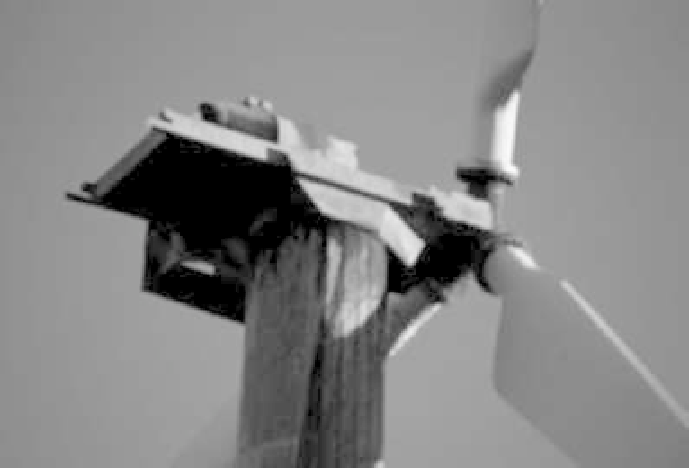Environmental Engineering Reference
In-Depth Information
believed that high average wind speeds could increase output if
larger generators were used in machines with smaller rotors. At
first there seemed to be no obstacle to use a 75 kW generator for
a wind turbine rated at 56 kW like Fayette did. After three years
of operation experience, Fayette made the step to 400 kW. ESI
made a jump from 65 kW to 200 kW, which was a massive
step at that time. Hurrying led to a loss of proper wind turbine
development. Quality of production, adequate siting and site
development sufered. Soon, operators faced tremendous problems
with hundreds of inoperative machines. For some, too rapid up-
scaling, failing machines and uncertainty about the future of the
tax credits turned the wind rush into a nightmare. It was the other
side of the coin.
Figure 23.5
Danish Micon 65 kW operating without nacelle cover,
Altamont Pass, 2010 (Photo: Arne Jaeger).
In Denmark, however, the 1980s saw a completely diferent
philosophy. On a private level, manufacturers started their deve-
lopment with tiny machines around 15 kW and continuously up-
scaled them in small steps. Design was always adapted to size, and
technical know-how was gained during all steps. A strong network
was built, and know-how was shared. The success story had its


Search WWH ::

Custom Search